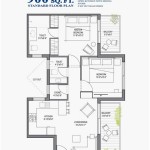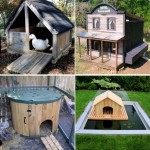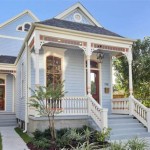A house plan with a pool in the middle is a type of home design where the swimming pool is located within the central courtyard or atrium of the house, serving as a focal point and providing access to all areas of the dwelling. This architectural concept offers a unique and luxurious way of incorporating a pool into a home, creating a seamless indoor-outdoor living experience.
House plans with pools in the middle often feature large glass doors or windows that surround the pool area, providing ample natural light and creating a sense of openness. The pool itself may be designed with various shapes, sizes, and features, such as fountains, waterfalls, or underwater lighting, to complement the overall aesthetics of the home. In some cases, the pool may extend beyond the confines of the courtyard, creating an indoor-outdoor transition that enhances the connection between the interior and exterior spaces.
Moving forward, we will explore several captivating examples of house plans with pools in the middle. These designs showcase the diversity and creativity that architects employ to create stunning and functional living spaces. Each project offers unique solutions to incorporate a central pool while maintaining the privacy, security, and comfort of the residents.
Important Considerations for House Plans with Pool in the Middle:
- Maximize Natural Light
- Ensure Privacy and Security
- Control Moisture and Humidity
- Provide Proper Ventilation
- Consider Accessibility and Safety
- Select Durable Materials
- Plan for Year-Round Use
- Prioritize Energy Efficiency
By carefully addressing these aspects, architects and homeowners can create house plans with pools in the middle that are not only visually stunning but also practical and enjoyable for all.
Maximize Natural Light
Incorporating ample natural light is crucial for house plans with pools in the middle. A well-lit space not only enhances the overall ambiance but also promotes well-being and reduces energy consumption.
- Large Glass Doors and Windows: Installing expansive glass doors and windows around the pool area allows natural light to flood the interior, creating a bright and airy atmosphere. This design feature seamlessly connects the indoor and outdoor spaces, blurring the boundaries between them.
- Skylights and Clerestory Windows: Skylights and clerestory windows strategically placed on the roof or upper walls can introduce natural light from above. They provide diffuse and evenly distributed illumination, reducing the need for artificial lighting during the day.
- Courtyard Design: Designing the pool as part of an enclosed courtyard helps to trap and reflect natural light within the space. Surrounding walls or structures can be painted in light colors to enhance the reflective properties and further brighten the area.
- Reflective Surfaces: Incorporating reflective surfaces, such as light-colored tiles or water features, can bounce and disperse natural light throughout the pool area. This technique helps to amplify the available light and create a more luminous and inviting space.
By maximizing natural light in house plans with pools in the middle, architects can create spaces that are not only visually appealing but also healthy and energy-efficient.
Ensure Privacy and Security
When designing house plans with pools in the middle, ensuring privacy and security is of utmost importance. Homeowners need to feel safe and secure while enjoying their outdoor oasis, and the design should prevent unwanted access or intrusion.
- Enclosed Courtyards: Creating an enclosed courtyard around the pool area provides a physical barrier that enhances privacy and security. High walls, fences, or hedges can be used to establish a secure perimeter, shielding the pool from prying eyes and unauthorized entry.
- Gated Access: Installing gates at all entry points to the pool area adds an extra layer of security. Gates can be controlled with locks, keypads, or intercom systems to restrict access only to authorized individuals.
- Privacy Landscaping: Strategic landscaping can be used to create natural barriers and enhance privacy. Planting tall shrubs or trees around the perimeter of the pool area can obscure views from outside while adding aesthetic appeal.
- Security Lighting: Proper lighting is essential for nighttime security. Motion-activated lights can illuminate the pool area when someone approaches, deterring intruders and providing a sense of safety.
By incorporating these measures, architects and homeowners can create house plans with pools in the middle that offer both privacy and peace of mind.
Control Moisture and Humidity
Controlling moisture and humidity levels is crucial for house plans with pools in the middle. Excess moisture can lead to condensation, mold growth, and structural damage, while high humidity can make the space uncomfortable and unhealthy.
Proper Ventilation: Ensuring adequate ventilation is vital to prevent moisture buildup. Installing exhaust fans in bathrooms, kitchens, and other moisture-prone areas helps to remove excess moisture from the air. Additionally, cross-ventilation can be achieved by opening windows and doors on opposite sides of the pool area to promote air circulation.
Dehumidifiers: Dehumidifiers can be used to reduce humidity levels in the pool area. These devices extract moisture from the air, creating a more comfortable and dry environment. Proper sizing and placement of dehumidifiers are important to ensure effective moisture removal.
Moisture-Resistant Materials: Utilizing moisture-resistant materials in the construction and finishing of the pool area is essential. Water-resistant paints, sealants, and tiles help to prevent moisture penetration and damage to the structure. Additionally, choosing furniture and textiles that are resistant to moisture and mildew can help to maintain a healthy and aesthetically pleasing space.
By implementing these moisture and humidity control measures, architects and homeowners can create house plans with pools in the middle that are not only beautiful but also healthy and durable.
Provide Proper Ventilation
Ensuring proper ventilation is paramount in house plans with pools in the middle to prevent moisture buildup and maintain a healthy indoor environment. Adequate ventilation allows fresh air to circulate, removing excess moisture and reducing the risk of condensation and mold growth.
Cross-Ventilation: Cross-ventilation is a passive ventilation technique that utilizes natural air currents to remove moisture and heat from a space. By strategically placing windows and doors on opposite sides of the pool area, architects can create a natural airflow that helps to ventilate the space. Opening windows and doors on opposite sides allows fresh air to enter and stale air to escape, reducing humidity levels and improving air quality.
Exhaust Fans: Exhaust fans are mechanical ventilation devices that actively remove moisture from the air. Installing exhaust fans in bathrooms, kitchens, and other moisture-prone areas helps to eliminate excess moisture before it can spread throughout the pool area. Exhaust fans should be properly sized and vented to the outdoors to ensure effective moisture removal.
Air Conditioning and Dehumidification Systems: In some cases, air conditioning and dehumidification systems may be necessary to control moisture levels in house plans with pools in the middle. These systems can remove large amounts of moisture from the air, creating a more comfortable and dry environment. It is important to ensure that these systems are properly designed and maintained to effectively manage moisture levels and prevent condensation issues.
By implementing these proper ventilation strategies, architects and homeowners can create house plans with pools in the middle that are not only visually stunning but also healthy and comfortable for all.
Consider Accessibility and Safety
Accessibility and safety are of paramount importance in house plans with pools in the middle. Thoughtful design considerations must be made to ensure that the pool area is accessible to all users, including individuals with disabilities, and that appropriate safety measures are in place to prevent accidents and injuries.
Universal Accessibility: To ensure accessibility, house plans should incorporate universal design principles that make the pool area accessible to individuals with diverse abilities. This includes providing ramps or gradual slopes for entry and exit points, installing grab bars and handrails for support, and ensuring that pathways and surrounding areas are wide enough for wheelchairs and other mobility aids.
Slip-Resistant Surfaces: Slip-resistant surfaces are essential around the pool area to prevent falls and accidents. Choosing non-slip tiles, decking materials, and other surfaces can significantly reduce the risk of slips and falls, especially when the area is wet. Additionally, providing adequate lighting around the pool area is crucial to ensure visibility and prevent tripping hazards.
Pool Safety Features: To enhance safety, house plans with pools in the middle should include essential safety features such as pool covers, fencing, and alarms. Pool covers help to prevent accidental falls into the pool, while fencing acts as a physical barrier to restrict access to the pool area, especially for young children and pets. Additionally, pool alarms can provide an early warning in case of an accidental entry into the pool.
By prioritizing accessibility and safety in the design of house plans with pools in the middle, architects and homeowners can create spaces that are both enjoyable and secure for all users.
Select Durable Materials
Selecting durable materials for house plans with pools in the middle is crucial to ensure longevity, low maintenance, and resistance to the unique environmental conditions of the pool area. The materials used for flooring, walls, and other surfaces should be able to withstand exposure to moisture, chemicals, and temperature fluctuations without deteriorating or compromising the structural integrity of the space.
Flooring: For pool deck flooring, non-slip and water-resistant materials are essential. Porcelain or ceramic tiles are popular choices due to their durability, ease of maintenance, and wide range of design options. Natural stone, such as travertine or limestone, can also be used, but may require more frequent sealing to maintain their resistance to moisture and staining.
Walls: The walls surrounding the pool area should be constructed using materials that can withstand moisture and humidity. Water-resistant paints and sealants are essential to protect the walls from water damage and mold growth. Stucco, tile, or stone are all suitable options for pool area walls, as they are durable, easy to clean, and can withstand the moisture-rich environment.
Other Surfaces: In addition to flooring and walls, other surfaces in the pool area, such as countertops, railings, and outdoor furniture, should also be made of durable materials. Stainless steel, aluminum, and composite materials are all good choices for outdoor furniture, as they are resistant to rust and moisture. Quartz or granite countertops provide durability and resistance to stains and scratches, making them ideal for poolside kitchens or bars.
By carefully selecting durable materials for all aspects of the pool area, architects and homeowners can create house plans that are not only visually appealing but also built to last, ensuring a low-maintenance and enjoyable outdoor oasis for years to come.
Plan for Year-Round Use
In regions with varying seasons, house plans with pools in the middle should consider design elements that allow for year-round use and enjoyment of the pool area. By incorporating features such as heating systems, retractable roofs, and indoor-outdoor connections, architects can create spaces that can be utilized and appreciated throughout the year.
Heating Systems: Installing a pool heating system, such as a heat pump or solar heater, allows homeowners to extend the swimming season and enjoy the pool even during cooler months. Heat pumps transfer heat from the surrounding air or ground into the pool water, while solar heaters utilize solar energy to warm the water. These systems can significantly increase the usability of the pool and make it a more enjoyable space for swimming and relaxation year-round.
Retractable Roofs: Retractable roofs provide a flexible solution for controlling the climate in the pool area. These roofs can be opened during favorable weather conditions to allow for natural sunlight and ventilation, and closed during inclement weather or when the pool is not in use. Retractable roofs can also be equipped with insulation and lighting, making the pool area comfortable and usable even during extreme temperatures.
Indoor-Outdoor Connections: Seamlessly connecting the indoor and outdoor spaces can enhance the year-round usability of house plans with pools in the middle. Large glass doors or windows can be incorporated to create a visual connection between the pool area and the interior living spaces. Additionally, covered patios or sunrooms can provide sheltered areas for relaxation and entertaining, allowing homeowners to enjoy the poolside ambiance even during inclement weather or during the cooler months.
By carefully considering these design elements, architects and homeowners can create house plans with pools in the middle that offer year-round enjoyment and functionality, regardless of the climate or season.
Prioritize Energy Efficiency
Incorporating energy-efficient features into house plans with pools in the middle is crucial to reduce energy consumption and create a more sustainable and eco-friendly living space. By implementing strategies such as proper insulation, energy-efficient appliances, and renewable energy sources, architects and homeowners can minimize the environmental impact of their pool and ensure long-term savings on energy costs.
- Insulation: Proper insulation of the walls, roof, and windows surrounding the pool area is essential to reduce heat loss and improve energy efficiency. Using high-quality insulation materials, such as fiberglass, cellulose, or spray foam, can minimize heat transfer, reducing the need for heating and cooling systems.
- Energy-Efficient Appliances: Choosing energy-efficient appliances, such as pumps, filters, and lighting, can significantly reduce energy consumption in the pool area. Look for appliances with Energy Star ratings to ensure optimal energy performance and savings.
- Renewable Energy Sources: Utilizing renewable energy sources, such as solar panels or geothermal heat pumps, can provide sustainable and cost-effective ways to heat the pool and power the pool equipment. Solar panels can generate electricity to run the pumps and filters, while geothermal heat pumps can extract heat from the ground to warm the pool water.
- Pool Covers: Using a pool cover when the pool is not in use can help to reduce evaporation and heat loss, which can result in significant energy savings. Thermal pool covers are particularly effective in retaining heat, reducing the need for heating the pool water.
By prioritizing energy efficiency in the design of house plans with pools in the middle, architects and homeowners can create sustainable and eco-conscious spaces that minimize energy consumption, reduce operating costs, and contribute to a greener future.









Related Posts








